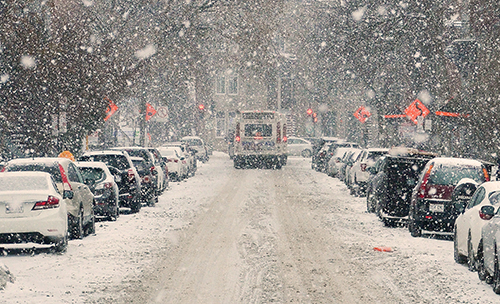Bus driving in winter: a different reality

Buses: the challenges of winter driving
Like car drivers, bus drivers face difficult winter conditions that required them to adapt their driving and inevitably impact service schedules:
Wind, snow, sleet
These elements reduce the visibility of bus drivers, who must slow down and drive with added caution. They must also be extra vigilant to see transit users waiting at stops.
Snowplows
These vehicles remove snow from roads, but they also slow traffic.
Roads that haven't been cleared of snow
In the event of heavy snowfall or freezing rain, snow removal and salting operations must take place on several roads and arteries simultaneously, which is sometimes impossible to do. As a result, drivers must slow down on their routes.
Stops that are buried in snow or sparsely cleared
In this instance, transit users have to climb over a snowbank to embark or disembark, which inevitably requires more time.
Reserved lanes and shoulders that haven't been cleared
Buses must then use regular lanes and meeting their schedule depends on traffic volume. Also, the shoulders on Highways 13, 30 and 40, may not be used by buses when covered in snow.
Badly parked cars
If a car is obstructing a public road, it hinders bus traffic.
Want to know if your bus will be on schedule? Follow the Twitter account for your area. You will find the most up-to-date information on your route’s service status. To see all the tools available for transit users, click here.
